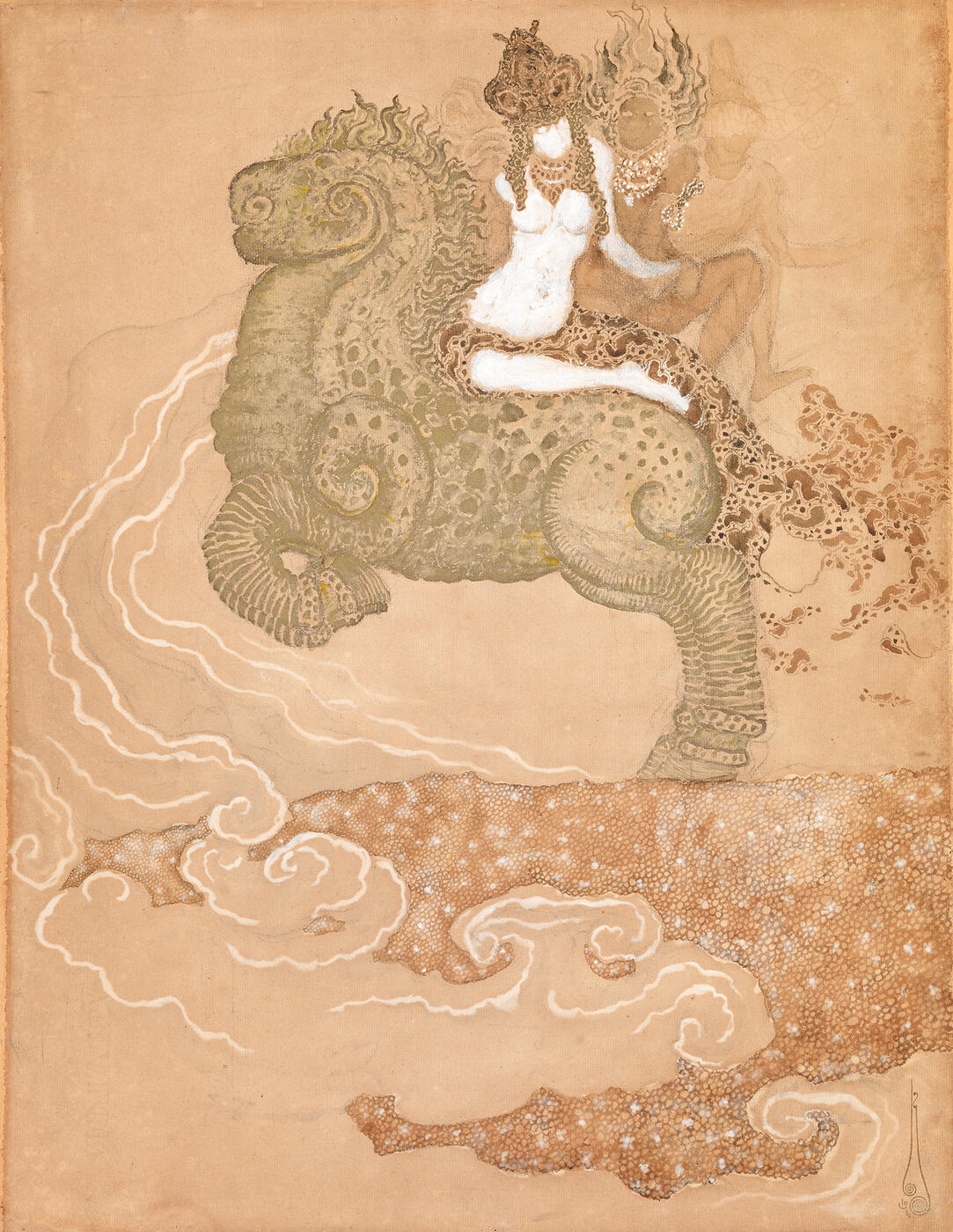3 June 2015 Russian Art Auctions
3 June 2015

*§ 141. KALMAKOV, NIKOLAI (1873-1955)
Three Women Riding a Mythical Monster, signed with a cypher and dated 1911.
Pencil and watercolour, heightened with white and gold, on paper, laid on cardboard, 64 by 49.5 cm.
150,000-200,000 GBP
Provenance: The Russian Art, Sotheby’s London, 19 May 2005, lot 88.
Private collection, USA.
Exhibited: Nicolas Kalmakoff, Galerie Motte, Paris, 7 February–5 March 1964, No. 17.
Literature: Exhibition catalogue, Nicolas Kalmakoff, Paris, Galerie Motte, 1964, p. 11, No. 17, listed as Trois femmes chevauchant un monstre.
J. Bowlt, Yu. Balybina, Nikolai Kalmakov i labirint dekadentstva. 1873–1955, Moscow, Iskusstvo – XXI vek, 2008, p. 32, illustrated.
An artist of the Silver Age of Russian culture, Nikolai Kalmakov created his composition Three Women Riding a Mythical Monster in 1911, during one of the most fruitful periods of his creative life. The work is signed: it bears the artist’s monogram, stylised to resemble a phallic symbol. The mixed technique is very typical of Kalmakov’s best work and generates a remarkable colour and texture that render this piece unique and exquisite.
The artist loved to create works that used images of various triads; such as Three Black Women-Sirens (1912) and Atlas and the Hesperides (1910s). Stylistically, his Three Women Riding a Mythical Monster is closest to the latter, but the subject – the Orient and erotic love – is entirely different. Kalmakov’s Orientalism is not just a variety of luxurious colours, but rather a precise language of symbols. At the same time, this piece is characterised by a slight incompleteness and the charm of non finito.
In the centre of the composition is a rampant chimera – half ram and half horse – like a sculpture in jade, the favourite stone of the Orient. The artist has combined these traditional erotic, animal images from Indian and Chinese art to embody masculine strength. The women on the back of the monster are beautiful oriental nudes. A white woman sits in the Lalitasana pose – one leg bent in the half-lotus position and the other extended and slightly lowered. This is the usual manner of depicting Saraswati, the companion and acolyte of Brahma. The two riders beside her are dark and light female hypostases. Neither the chimera nor the riders have eyes, which increases the symbolic power of the images. For Kalmakov, love is a dark and blind force that holds sway over people.
The rock beneath the mythic monster is painted in the Pointillist style with a scattering of fine spots of colour, and the white puffs of stylised water or cloud echo the Chinese ornamental tradition. The feminine element of water is in rhythm with the masculine element of the sand, which the fabric streaming from the saddle becomes; speaking of the inseparability of the masculine and feminine principles.
This picture of Three Women Riding a Mythical Monster is of value as an attempt by a European artist to reconsider images of the Orient and create a new language of symbols. It is intended to be looked at for a long time for the riddle of its latent ideas to be solved, a feature typical of Kalmakov’s work.
Notes on symbols:
* Indicates 5% Import Duty Charge applies.
Ω Indicates 20% Import Duty Charge applies.
§ Indicates Artist's Resale Right applies.
† Indicates Standard VAT scheme applies, and the rate of 20% VAT will be charged on both hammer price and premium.